By JULIE MINDA
When the pandemic upended the way U.S. Catholic health ministries conducted their global health work, leaders of international mission departments and teams realized they did not have to be in-country to help their partners in the developing world mount
a response to COVID-19.
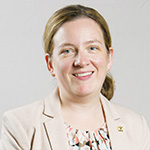
Grippon
Around April 2020, Camille Grippon used her living room in Marriottsville, Maryland, as a makeshift studio to produce three infection prevention videos in Spanish for Peruvians.
Grippon directs global health for Bon Secours Mercy Health system. She and her husband, a humanitarian aid worker with a knack for videography, produced shorts on COVID-19 facts and myths, symptom identification and precautions for Sisters of Bon Secours
and others doing field work to use to minimize infection risk.
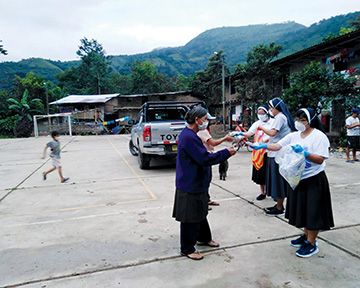
In Piura, Peru, in July 2020, Sisters of Bon Secours distribute medicines to families of people with COVID-19. Members of Bon Secours Mercy Health's global missions team helped train these sisters and others on isolation and treatment protocols through
videos shared on WhatsApp and reinforced via Zoom meetings.
Much of Bon Secours Mercy Health's global health work is concentrated in areas of Peru where Bon Secours and Mercy sisters have a long-standing presence and where abject poverty is high. (Bon Secours Mercy Health also does global health work in Haiti
and South Sudan.)
Around the time she made the videos, Grippon also found herself in extensive conversations over Zoom with staffers at the 32-bed Clínica Madre de Cristo in Northern Peru's La Esperanza district as staff set up a COVID testing area.
Grippon advised the staff on how to get COVID test kits, alcohol gel, masks, goggles and gloves. Together, Grippon and the staffers determined how best to lower infection risk in the clinic.
"You will want to close that window in your emergency department so that germs don't come in from the triage area," Grippon advised as she toured the space via Zoom.
Working as equals
Grippon was among several ministry global health executives who spoke with Catholic Health World about how changes necessitated by the pandemic provided a proof of concept and accelerated a continued shift
in approach in international mission outreach — one that favors close partnerships with providers who are citizens or permanent residents of host countries.
The goal of this approach is for mission outreach efforts to build sustainable capacity in public health and health care in under-resourced, developing countries and to do so through knowledge sharing and human-capacity building.
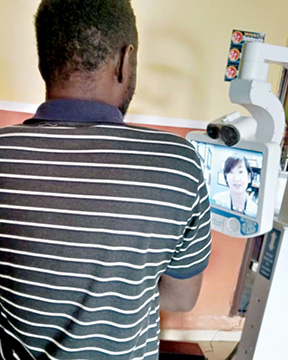
A clinician in Opoji, Nigeria, engages with Dr. Connie Bartlett earlier this year as a part of a telementorship program from Providence St. Joseph Health and World Telehealth Initiative. Bartlett is a pediatrician with St. Joseph Heritage Medical
Group in Santa Ana, California.
Well before the pandemic, the 10 members of CHA's Global Health Advisory Council and Bruce Compton, CHA's senior director of global health, had been encouraging a shift away from an emphasis on fly-in and fly-out mission trips. For such missions, teams
of volunteers from the U.S. may pay their own travel expenses and/or be sponsored by health systems or other nonprofit entities. Such teams commonly staff temporary clinics to perform surgery or other procedures, or pitch in on building village works
projects including clean water or sanitation systems.
"Guiding Principles for Conducting Global Health Activities," a CHA resource published in 2015 and updated in 2020, emphasizes the need for partnering
with host countries as equals, and asking rather than assuming what is needed.
Grippon said ministry global health teams have taken this guidance to heart and have been gradually lessening on-the-ground involvement of U.S. staff and volunteers while increasing support and advice directed at building the capacity of in-country teams
to do the work. When travel bans between countries brought in-person aid to a halt, these teams knew how to proceed.
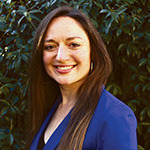
Grey
Grippon and another member of the global advisory committee, Brittn Grey, say their respective international mission teams dramatically increased their use of remote technology to connect with their overseas partners and strategize a COVID response adapted
to potentially resource-challenged circumstances.
Grey is Providence St. Joseph Health's executive director of global and domestic immersion programs. Grippon and Grey said while they expect the use of communications technology to grow in international medical missions, neither of them foresees an elimination
of international mission trips.
Grey explained: "The pandemic has given us the opportunity to reevaluate. I don't think we understood prior to the pandemic the full potential of technology. The explosion of telehealth during the pandemic created a cascade of opportunities. We now see
a dual pathway of in-person and virtual global health," with a reduced focus on in-person presence.
Knowledge transfer
Among its works in Peru, Bon Secours Mercy Health provides financial, advisory and volunteer medical support to the Clínica Madre de Cristo, a hospital in a poor urban area in La Esperanza, as well as in impoverished
areas of rural Chimbote, Piura and Huacho. The health system supports community health outreach in all these places, including on sanitation, hygiene and illness prevention.
Grippon said prior to the pandemic, it was common for her and her team to go to La Esperanza to help identify and plan approaches to address health needs there and to build relationships with local officials. Bon Secours Mercy Health clinicians provided
direct medical care.
When pandemic-era travel bans were in effect, the U.S. and Peruvian teams stayed in almost constant contact through emails, Zoom and the WhatsApp technology.
The pandemic hit the U.S. before Peru. The U.S. team used knowledge and resources from the Centers for Disease Control and Prevention and Bon Secours Mercy Health to assist the La Esperanza clinic and the communities the system works with in preparing
for COVID's onslaught.
Grippon and her team translated and supplied numerous resources on infection prevention, hygiene protocols and mask use. They talked clinic staff through setting up the triage unit and devising strategies for communicating infection prevention information
to community members, including the videos Grippon made.
Grippon said during pronounced COVID outbreaks Peruvian clinicians labored through a scarcity of oxygen and intensive care unit beds, and — when vaccines became available — a severe shortage of inoculations.
When COVID precautions shut down clinics and medical office visits, Grippon and her colleagues advised the Peruvian hospital team on setting up a telehealth system. It has an audio-only option for patients without video connections. This system is still
in use today.
Telementoring
Grey said the pandemic put into overdrive Providence's efforts to increase its emphasis on knowledge-sharing initiatives.
In Guatemala, working with partner Medical Teams International and the Ministry of Health, Providence supported the set up of a telementoring program this year. Spanish-speaking clinicians at Providence advise and instruct Ministry of Health clinicians
in Guatemala's El Quiché region on how to conduct trainings. They are working to close gaping inequities in maternal and child health and emergency obstetrics.
In Nigeria, Providence is partnering with the nonprofit World Telehealth Initiative; Teladoc, a publicly traded telehealth company; and the Ministry of Health to build via videoconference Nigerian clinicians' capacity around community health.
And through partnerships in Uganda with Seed Global Health, Providence has contributed to a regional learning network where Providence clinicians share their knowledge of emergency medicine live with about 1,000 Ugandan clinicians at a time.
Technology equity
In a February blog post about Providence's international work, Grey described efforts to ensure advances in medicine are available to all countries, not just rich ones.
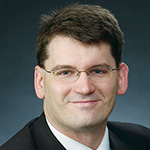
Czartoski
Neurologist Dr. Todd Czartoski is Providence chief medical technology officer and chief executive of telehealth. He said technology can enable providers in wealthy countries to share their knowledge and resources more efficiently with partners in poor
nations. However, he said, the barriers to using technology to extend the reach of overseas mission work are so great that Providence, like numerous other U.S. systems that prioritize global health equity, is only in the early stages of determining
how best to surmount them.
While Teladoc and other for-profit companies are funding some of the needed hardware and connectivity to bring telehealth to the developing world, the infrastructure build-out has been very limited.
Plus, said Czartoski, even if telehealth connections were more widely available, many U.S.-based specialists rely on complex testing and imaging to make diagnoses. Their skillset is not necessarily compatible with the rudimentary tools available on the
host country's side of the connection.
Grey said Providence has made advocacy for technology equity a corner piece of its efforts around international capacity-building. "It's imperative to advance the common good and strengthen health care systems around the world."
Visit chausa.org/global-health/guiding-principles to access CHA resources on international health outreach.